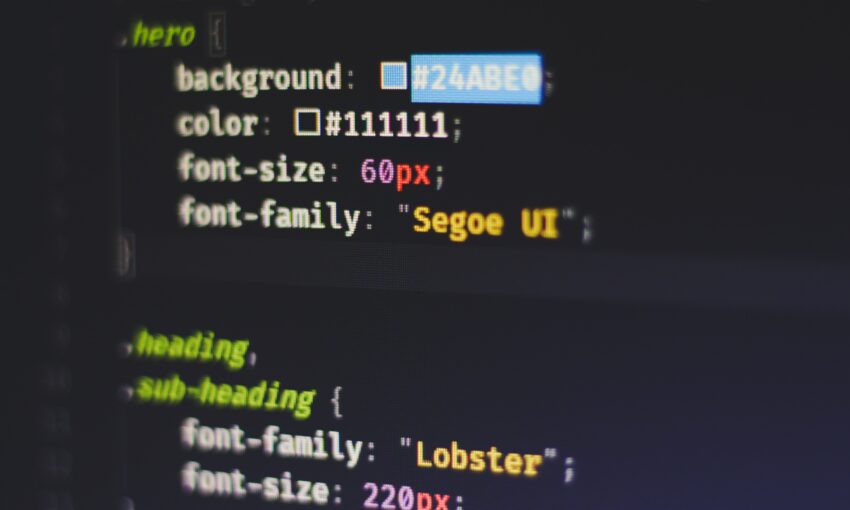Whether you’re studying responsive design or looking for code snippets to use for your own layout, this collection is sure to please.
1. Responsive Button Nav
Nested menus are crucial for any detailed site with 10+ pages. This responsive menu supports nesting with rounded link button styles.
As the page resizes the buttons hide behind a three-bar hamburger menu. But they still maintain their sub-menu links which appear on click/hover using CSS3 transition effects. Clean, efficient, and easy to add into any layout.
2. Flat Nav Box
Square flat navigation is usually the most popular style to work with. This pen makes it even easier where you can support 2nd and 3rd tier links in dropdown menus on smaller screens.
The color scheme needs some work because it’s tough to tell the different menus apart from each other. But the usability is perfect for all screen sizes no matter how many links you have.
3. Smooth Fade
Fading navigation menus are popular with creative agencies and they’re really easy to create. This smooth fading menu created by Mehmet Burak Erman adds an over-the-page window for the mobile navigation.
It works by using CSS classes to restyle the menu as a full-page interface for smaller screens. JavaScript handles the user click effects but the design is all CSS.
4. Material Design
Google’s Material Design is wildly popular among designers for its clear implementation and quality user experience. That’s why I love this material menu created by Hanlin Chong.
It uses the sliding hamburger-style flyout on smaller screens with a crisp animation effect. And when the menus open you can click/tap anywhere outside the menu box to auto-close. This feature really makes a difference in the user experience and it’s one of the reasons I recommend this code snippet.
5. Pure CSS Mega Menu
Modern online magazine themes use mega-menus to include extra links & recent articles in larger dropdown menus. These menus look great on desktop but can be tough moving over to mobile.
That’s where this snippet can help. It’s built entirely on CSS so it’s a totally JS-free option. The mega menus look fantastic and the responsive menu includes all of these links, thumbnails, and the main hierarchy found in the original dropdowns.
6. Overlay Menu
One thing I like about this overlay menu is the columned link structure. It still uses the hamburger icon but the responsive menu overlays the entire page.
Each top link is listed side-by-side with sub-links organized into columns. This makes scanning the menu a lot easier and provides plenty of room for sites with lots of pages.
7. Responsive with Dropdown
For a simple on-page slidedown menu check out this snippet created by Jean Law Yim Wan. it’s powered by jQuery and uses a lengthy dropdown function to control the responsive navigation and the sub-menus.
It’s a relatively simple solution to the complexity of multi-level menus. But this only works for sites with a small handful of primary nav links.
8. Multilevel Flyout
One of the toughest responsive nav styles is the multi-level responsive navigation. This would ideally support dozens of links including dropdown links.
I think this code snippet handles the situation well using arrows to indicate sub-menu links. Responsive users can click between the main links or sublinks while browsing the flyout menu.
The animation effects are quick, yet consistent, and they add some vivacity to the interface. Plus the flyout is lengthy enough to support dozens of links making this perfect for content-heavy websites.
9. Batman Nav
I’m not sure why this is called the Batman nav but it’s a very high-quality menu. It’s built for a single page website so each link jumps between page sections on command.
These nav links hide behind a hamburger icon for smaller screens but they’re still easy to access. They appear in a drop-down menu which makes navigation a breeze.
If you’re building a single-page website and want a clean responsive solution, then the Batman nav is a stupendous choice.
10. Bootstrap 3 Navigation
Every web developer loves Bootstrap and with free snippets like this responsive menu it’s super easy to create fully-dynamic websites on the fly.
This snippet from Bryan Willis offers nine different menus ranging from fullscreen navbars to logo alignments on the left, right, or center of navigation links. It runs purely on HTML & CSS so if you’re building with Bootstrap, this is one of the simplest menus to use.
Wrapping Up
Responsive navigation doesn’t have to be difficult. Just make sure to consider the user experience rather than just creating a responsive navigation that looks good.
These code snippets should offer a solid base for getting started on your own ideas. But if you’re looking for more examples, take a look at this collection.
This post may contain affiliate links. See our disclosure about affiliate links here.



